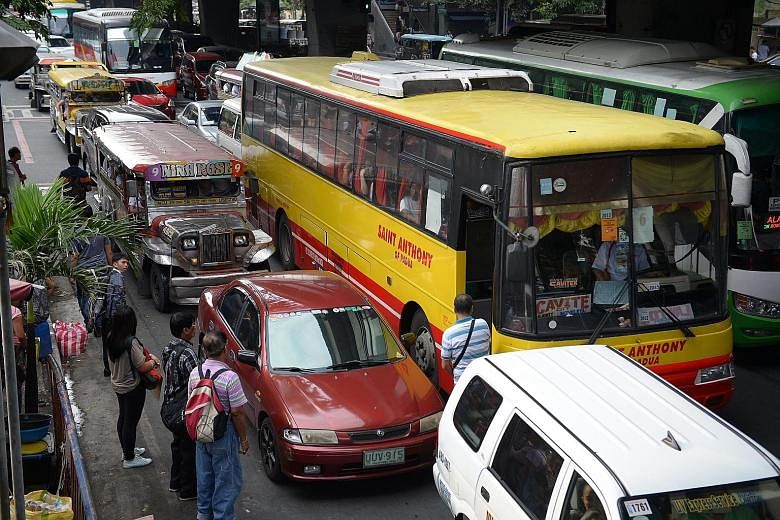The Philippines and Singapore agreed yesterday to collaborate on measures to help untangle metropolitan Manila's massive traffic jams.
Under a memorandum of understanding signed by Transportation Secretary Arthur Tugade and Singapore Cooperation Enterprise chief executive Kong Wy Mun, Singapore is offering to help the Philippines develop an "intelligent transport system" (ITS).
The system is designed to control traffic as well as monitor and manage congestion and road accidents.
Mr Tugade said the ITS will be part of a "basket of approaches" the government is putting together to solve Manila's traffic woes.
Among the measures being considered is "congestion charging", similar to Singapore's Electronic Road Pricing system.
Transportation Under-secretary Tim Orbos said the Philippines may also consider a quota system for car ownership - a version of Singapore's certificate of entitlement - to regulate the number of vehicles on the road.
There are about two million vehicles in metropolitan Manila. This 640 sq km metropolis has a road network no longer than 1,100km. That translates to 2,000 vehicles per kilometre. By comparison, Singapore has 280 vehicles per kilometre.
"You have a limited number of space, you have a lot of vehicles on the road, definitely you have to reduce. How to do it, whether (by) congestion pricing, number coding, quota system, there are short-term and long-term solutions," said Mr Orbos.
Another solution, Mr Kong has suggested, is public transport. "You need to encourage people to use public transport.
"For that to happen, you need a public transport that can actually deliver, that people can use."
Metro Manila has a daytime population of roughly 14 million. Some 11 million of them take public transport, but there are only 15,000 buses, 48,000 jeepneys, 27,000 taxis and 50km of rail available to ferry them.
The government has been looking into rolling out a "bus rapid transit" system that involves building 27.7km of dedicated bus lanes, stations and a card-based ticketing system.
Plans are also in the works to build more MRT lines. The Japan International Cooperation Agency estimates that heavy traffic in the capital is costing the Philippine economy 2.4 billion pesos (S$63 million) in lost productivity each day. If unchecked, that number may rise to 6 billion pesos a day by 2030.

